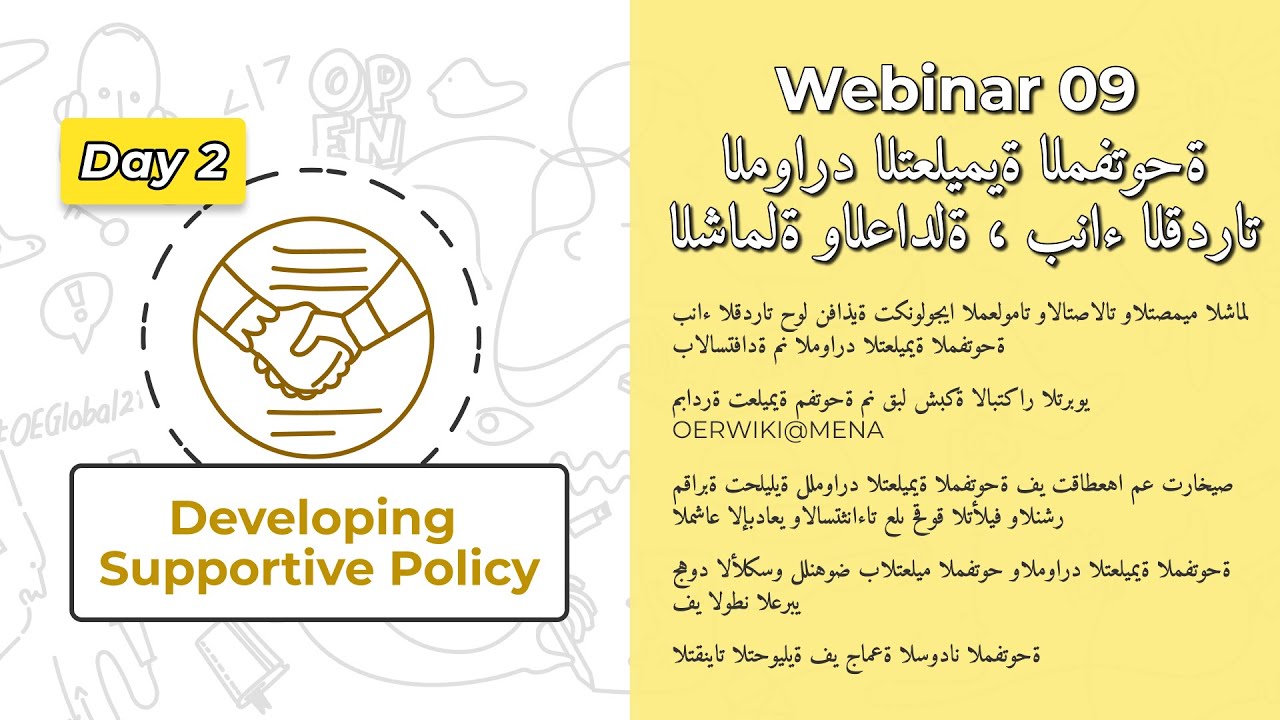Pr. Mokhtar Ben Henda, France
الموارد التعليمية المفتوحة هي مفهوم جديد في سياسات التعليم بشكل عام إذ دخلت حديثا في سياق التيار العالمي للتعليم المفتوح الذي تبلور منذ تأسيس الجامعة المفتوحة في عام 1969 في المملكة المتحدة. الفكرة الأساسية لـ “التعليم المفتوح” هي تعبير عن موقف وممارسة وطريقة تدريس تدعم الوصول المتكافئ إلى المعرفة، تتمير بتجاوزها لقيود النشر والتوزيع المعهودة واعتمادها أساليب أقل تعقيدا وأكثر شمولية. وتندرج في هذا المسار مبادرات داعمة تعنى مثلا بالبرمجيات والتراخيص مفتوحة المصدر (Open Source/Licence)، الأرشيفات المفتوحة (Open Archives) وكذلك الموارد التعليمية المفتوحة (OER) التي هي من المكونات الأساسية للعديد من المشاريع والمبادرات التعليمية ذات الاشعاع العالمي كمشروعOCW لجامعة MIT الذي أسس سنة 2001 أو " التعليم الإلكتروني المفتوح واسع النطاق" (MOOC) الذي انطلق سنة 2008 إلخ. إلا أن استعمال الموارد التعليمية المفتوحة في هذا السياق المندمج يخضع إلى شروط وضوابط منهجية غالبا ما يتغاضاها المستعملون لعدم الدراية بها أو لضعف أليات التأطير والمراقبة لآليات تطبيقها. من هذه المحاور التي نتعرض إليها في هذه المداخلة هي العلاقة بين الموارد التعليمية المفتوحة مع التراخيص مفتوحة المصدر من نوع المشاع الإبداعي وتقاطعها مع الاستثناءات على حقوق التأليف والنشر مع قراءة تقييمية للسياق العربي في هذا المجال وضرورة تحديث المناهج التعليمية للتلاؤم مع هذه المتغيرات العالمية في بناء مجتمع المعرفة الحديث.
الكلمات المفاتيح
التعليم المفتوح / الموارد التعليمية المفتوحة / حقوق التأليف / التراخيص مفتوحة المصدر / المشاع الإبداعي
Open educational resources are a new concept in the general education context. They marked the global framework of open education that took form since the establishment of the Open University in 1969 in UK. The basic idea of “Open Education” is an expression of a position, a practice, and a teaching method that supports equal access to knowledge, by transcending the typical restrictions of publication and distribution and adopting less complex and more comprehensive access methods. Within this perspective, many supportive initiatives were initiated, for instance software and open-source licenses, Open Archives, as well as Open Educational Resources (OER), which are among the basic components of many educational projects and initiatives of global impact, such as the OCW project of MIT founded in 2001, or Massive Open Online Course (MOOC) launched in 2008, etc. However, the use of open educational resources in this integrated world context is subject to methodological conditions and constraints that users often overlook due to lack of awareness or weakness of training and monitoring programs on their application. This presentation intents to discuss the relationship between open educational resources and Creative Commons licences and their parallel with copyright exceptions. An overall analysis of the Arab context is provided to highlight the need to update educational curricula to cope with these global changes in the building of a Modern knowledge society.
Keywords:
Open Education / Open Educational Resources / Copyright / Open-Source Licenses / Creative Commons
Webinar Information
This presentation is part of Webinar 09 الموارد التعليمية المفتوحة الشاملة والعادلة ، بناء القدرات taking place in your local time → .
Webinar Access (registered conference participants only):
![]()
![]() Go to Webinar 09
Go to Webinar 09
UNESCO OER Action Area: Inclusive and equitable OER, Building capacity
Language: ArabicSee the other presentations that take place in this webinar.
Presentation Recording
Participate
Before the webinar the authors will be asked to reply below with links to their presentation materials, related videos, and other relevant links, as well as prompts for discussion here.
For anyone that missed the live session, an archive will be posted here as soon as possible.
Conference participants are urged also to reply below with questions, comments for the presenters or to share related resources.
